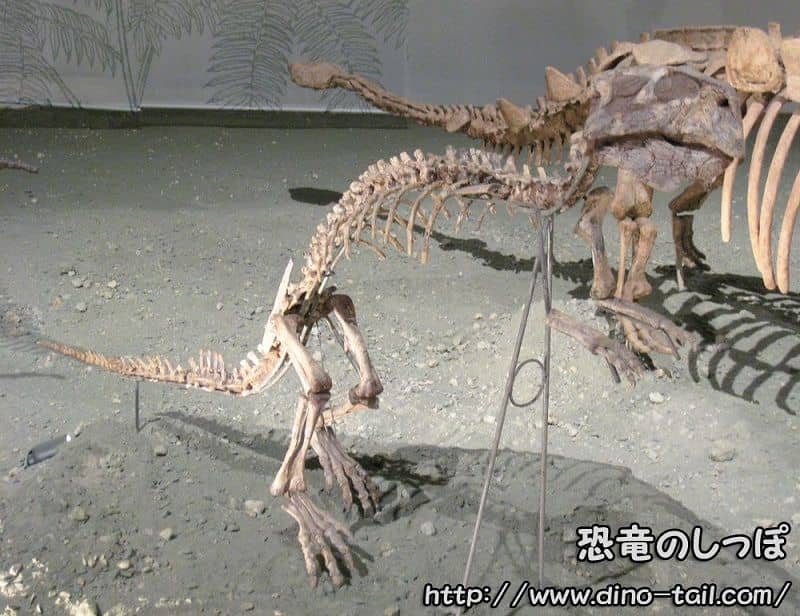About Psittacosaurus
| Scientific Name (Genus) | Psittacosaurus |
| Meaning of Name |
Parrot lizard
psittakos (parrot) [Greek] - sauros (lizard) [Greek] |
| Classification | Ornithischia, Marginocephalia (Ceratopsia) |
| Total Length | Approx. 1 - 2m |
| Diet | Herbivorous |
| Period | Early Cretaceous (120-97 million years ago) |
| Species |
Psittacosaurus mongoliensis
Psittacosaurus sinensis Psittacosaurus meileyingensis Psittacosaurus ordosensis Psittacosaurus gobiensis etc... |
| Year of Paper Publication | 1923 |
| Description Paper |
Two Lower Cretaceous dinosaurs of Mongolia.
American Museum Novitates. 95. by Osborn, Henry F. 1923. |
Features
Psittacosaurus is an early ceratopsian. It had no horns or frill and walked on two legs.
It was once thought to be the 'ancestor of ceratopsians,' but it has many features that differ from other ceratopsians, such as the number of fingers and features of the upper jaw, and it is now thought to be a 'genus that evolved uniquely on a branch of ceratopsians that diverged early.'
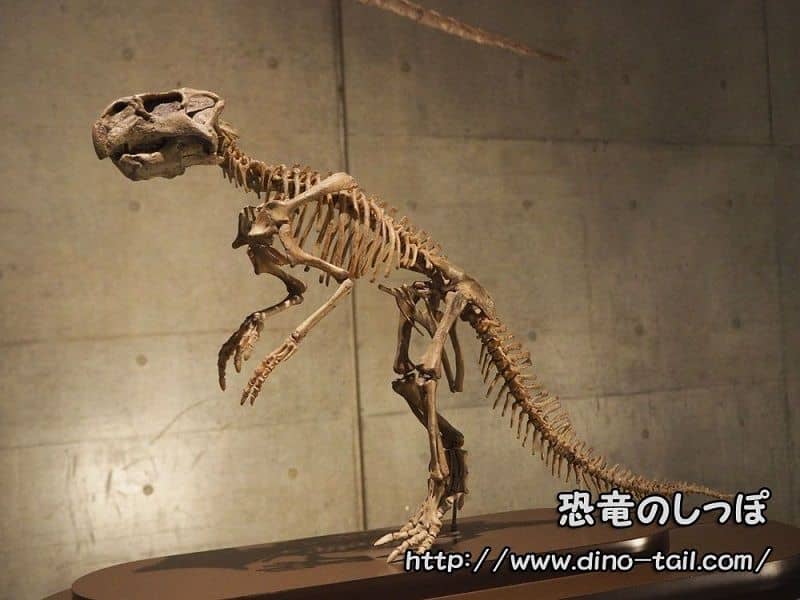
It had long, slender fingers suitable for gathering plants and a sturdy beak characteristic of ceratopsians. It is thought to have eaten hard wood, leaves, and seeds. It is often found in ginkgo-producing areas, so it may have eaten ginkgo nuts.
In 2007, a paper was published on the function of Psittacosaurus's forelimbs. It suggests that the forelimbs did not reach the ground and that it was almost completely bipedal. It seems that their small range of motion would not have been useful for bringing plants to its beak.
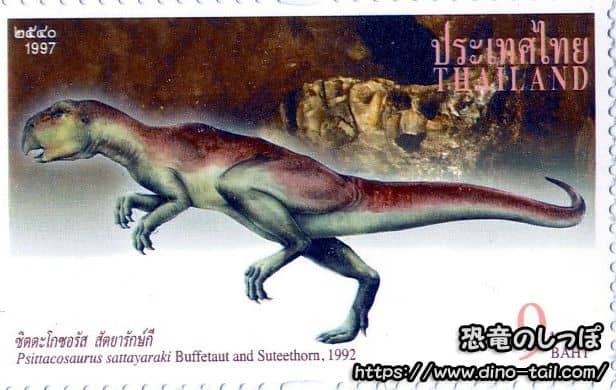
'Forelimbs just for gathering grass? What were the forelimbs for?'
In 2013, Qi Zhao of the University of Bristol published the results of a comparative study of 16 Psittacosaurus specimens. According to the paper 'How ‘parrot dinosaur’ switched from four feet to two as it grew,' contributed to the world-renowned scientific journal NATURE, the forelimbs grew rapidly until about the age of three, then their growth almost stopped between the ages of four and six, while the growth of the hind legs accelerated. He concluded that 'Psittacosaurus walked on four legs until about the age of four, and then switched to bipedal locomotion as its hind legs developed.'
It did not have the 'dental battery structure' seen in advanced ceratopsians like Triceratops.
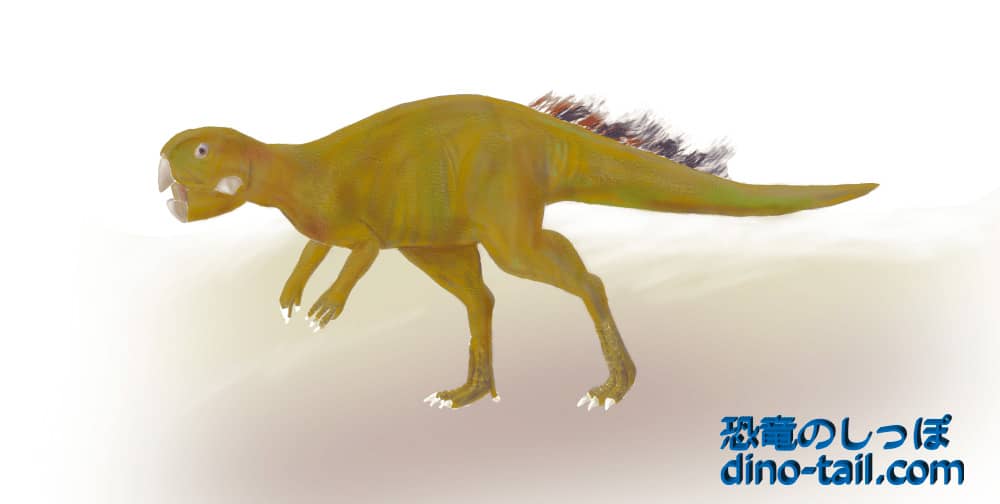
A Mass Fossil of Juveniles
In 2002, a fossil was discovered in the Yixian Formation in China where 34 juvenile Psittacosaurus and one slightly larger individual were buried together. At first, it was thought to be a 'fossil of a nest where a parent was caring for its young.'
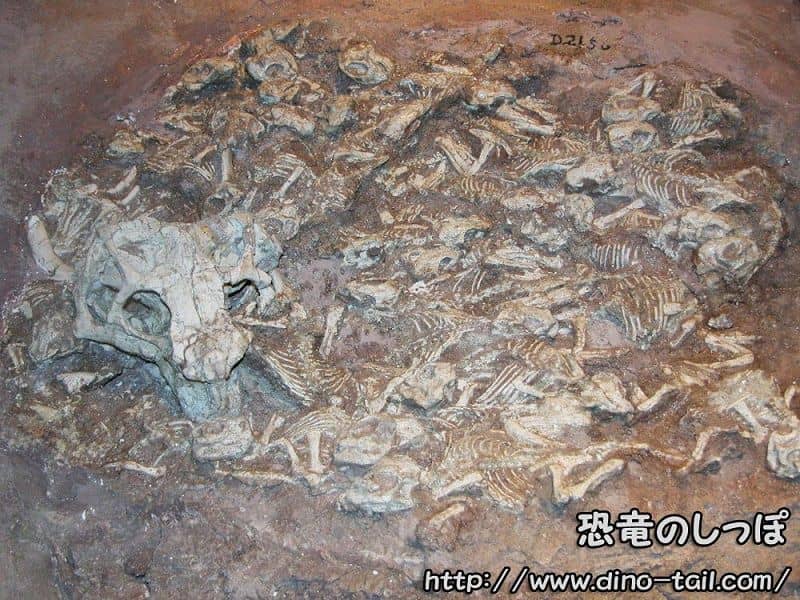
A mass fossil of one subadult and 34 juveniles - specimen number DNHM D2156, discovered in the Yixian Formation in China.
However, subsequent detailed research revealed that the larger individual was also a young individual (subadult) that was not yet old enough to lay eggs. Also, from the circumstances of the fossil discovery, it became more likely that they were not in a nest but were caught in a sudden disaster like a volcanic mudflow and died all at once. The average body length of the juveniles was said to be 23 cm.
It is now widely believed that this was not a 'family nest' but a scene where a disaster struck a group of juveniles who had become somewhat independent of their parents and were living in their own group (crèche). This suggests that Psittacosaurus may have had advanced social behavior.
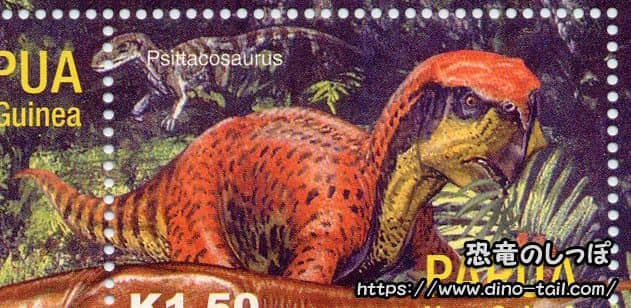
The True Nature of the Strange Bristles on its Tail
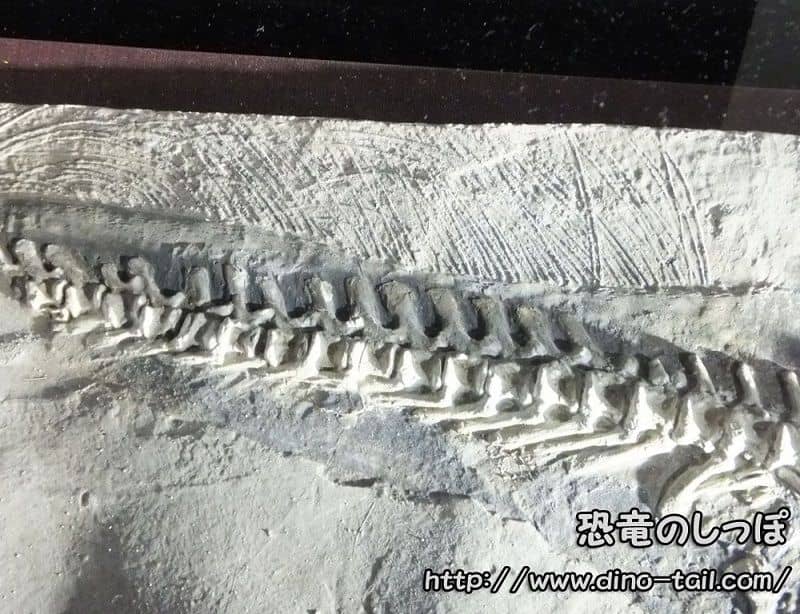
One of the strangest features of Psittacosaurus is the long, stiff, bristle-like structures that grew on the upper part of its tail. Unlike the feathers of birds, these were hollow, tubular bristles (keratinous spines) like the quills of a porcupine.
These bristles are a unique feature found in only a very small lineage of ornithischians, and it is thought that they were not for thermoregulation but for display to identify members of their own species or to attract mates.
A Miraculous Fossil Reveals Its 'Living Appearance'
A miraculous Psittacosaurus fossil, with its skin tissue preserved in three dimensions, housed in The Senckenberg Natural History Museum in Germany, has taught us about the appearance of dinosaurs that we never knew before.
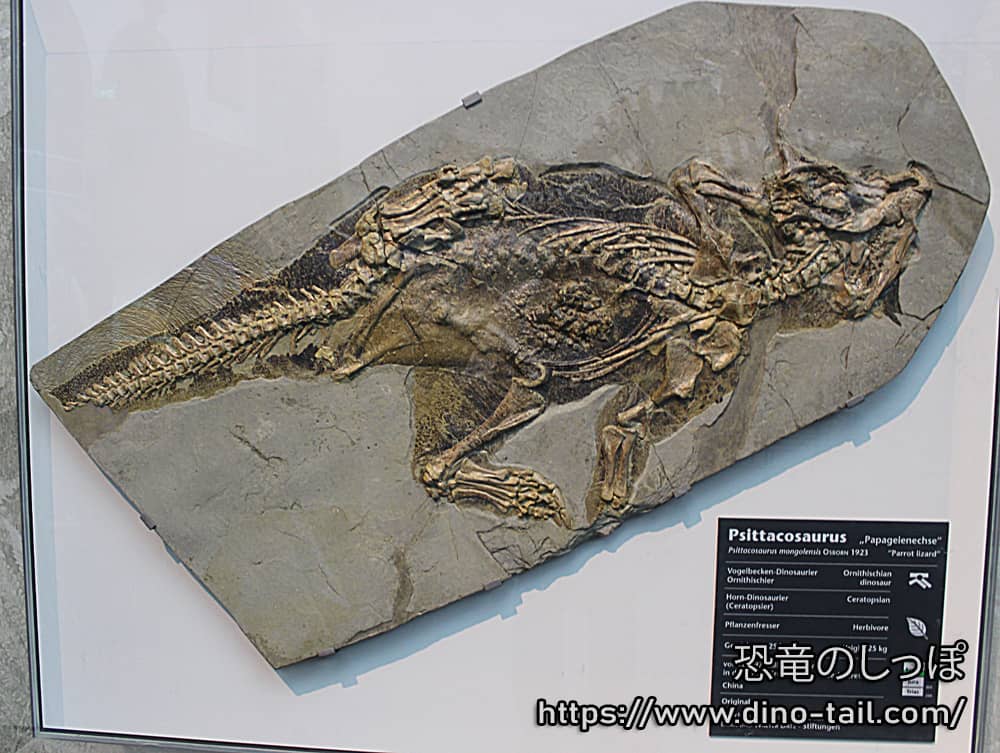
True Color and Camouflage
In 2016, a research team led by Dr. Jakob Vinther succeeded in scientifically reconstructing the true body color of Psittacosaurus by analyzing the traces of pigment (melanosomes) left in this fossil. As a result, it was found that it had a color scheme called 'countershading,' with a dark brown back that gradually lightened towards the belly. This is a typical camouflage (protective coloration) that makes it difficult to be seen by predators by erasing the body's shadow in environments with dappled sunlight, such as forests.
A First in Dinosaur History! Reconstruction of the Cloaca
Furthermore, in 2021, the same research team attracted worldwide attention by announcing that they had reconstructed the shape of the cloaca (the all-purpose opening) for the first time in dinosaur history from this fossil. Its shape was similar to that of birds and crocodiles, but because the sides were darkly pigmented, it has been suggested that it may have also been used for visual display (appealing to its own kind), like modern baboons. This discovery was a leap forward in our knowledge of dinosaur soft tissues.
Discovery and Description Paper
During the third expedition to Mongolia by the American Museum of Natural History, a member of the expedition team, Wong, discovered a nearly complete skeleton (specimen number AMNH 6254). In 1923, the American paleontologist Henry Fairfield Osborn described the new genus and species Psittacosaurus mongoliensis.

Source: Two Lower Cretaceous dinosaurs of Mongolia. American Museum Novitates. 95. by Osborn, Henry F. 1923.
Since the 1950s, hundreds of specimens have been excavated, mainly in China, Mongolia, and Russia, and 9-11 species are counted as valid, mainly based on the features and differences of their skulls and teeth.
